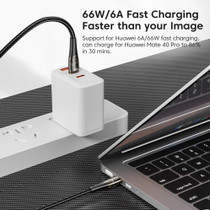

Toocki Direct Store

Deliver to
Columbus Free Shipping
Delivery byThursday, April 17, Order within
Free Shipping
Delivery byThursday, April 17, Order within
Shiped By: AliExpress
 Fast Delivery
Fast Delivery
 Security & Privacy
Security & Privacy
 FREE Return
FREE Return
There are 2 options/colors in the li…
There are 2 options/colors in the link.
If you need "ADF4350 PLL module ", please select the option
"Color: ADF4350 MODULE" !
If you need "ADF4351 PLL module ", please select the option
"Color: ADF4351 MODULE" !
Please don't buy the wrong item which
you don't need !
Please check before doing the payment,thank you very much !
Module model: ADF4351
Module type: wideband PLL frequency source
Supply voltage: DC-5v
Module current: 160mA(MAX) Static current 20mA(TYP) Normal driving current
(155mA)
Module communication protocol: SPI
Module provides routine: STM32F103RBT6 (dot frequency, sweep frequency)
Routine platform: STM32F103X-M3 (KEIL5 version source)
Module reference frequency: 100MHz (can be external input clock)
Reference frequency signal amplitude: 700mVpp(MIN)
Frequency stability: greater than 25PPM
Phase noise: each frequency point phase noise is different
Module output frequency range: 35MHz-4.4GHz
Frequency control step: 0.1MHz
Frequency sweep step time: 1ms (MIN)
Module output power: 7dBm (MAX) Different frequency output power
Module output interface: SMA (24 hours salt spray anti-oxidation)
Module output signal: sine wave or square wave
Module output channel: 2 differential channels
Module output impedance: 50 OhMs matching
Module signal characteristics: 35MHZ- - 2.2GHz square wave (fundamental wave
frequency division)
Module features: ultra-low phase noise, broadband RF PLL signal generator
Module application: RF signal frequency generator, sensor excitation source, line
loss attenuation detection, scan clock signal generator
Module specification: 50*50*7mm (length * width * height -PCB size)
Module operating temperature: 0-75℃
Module description
The ADF4351 is used in combination with an external loop filter and an external
reference frequency to implement an integer n-division PLL frequency synthesizer.
The ADF4351 features an integrated voltage-controlled oscillator (VCO) with a
fundamental output frequency range of 2200 MHz to 4400 MHzo. In addition,
using 1/2/4/8/16/32/64 frequency division circuits, users can generate RF output
frequencies as low as 35 MHz. For applications that require isolation, the RF
output stage can be muted. The mute function can be controlled either by pins or
software. It also provides auxiliary RF output and can be turned off when not in
use.
Module interface diagram


Precautions for module use
(1) The hand module is a high-precision device, in order to avoid unnecessary
interference, it is recommended to use linear power supply.
(2) Correct power supply, no reverse connection, voltage should not exceed 5.5V.
(3) The output signal is recommended to use a good conversion cable to access
the observation effect of the instrument. Poor contact or inferior wire may lead to
signal attenuation or excessive noise.
(4) If the module function needs to be simply tested, it is recommended to use it
with the control board of our shop. Power the PLL module first and then the
control board to generate waveform. Long press the middle key to switch the
function.
(5) Phase locked loop module phase noise, harmonics, power output and other
corresponding indicators











Frequently Asked Questions
ADF4351 output waveform is not sine wave, harmonics are large?
A: The ADF4351 is a digital phase-locked loop. The frequency output below 2.2G
is a frequency division output, and the output waveform is similar to a square
wave. If a sine wave is required, an external filter is required.
Q: Is the maximum frequency sweep speed of the ADF4351 only 1mS? Is the
minimum step only 0.1MHz?
A: The current loop bandwidth design and software design on the board, in order
to support 35M-4.4G frequency can be output normally, so fixed the minimum
step and the fastest sweep time, need to pursue more small steps and faster
sweep time, need to make hardware and software adjustments.
Q: PLL module, what are the two lights on the board, they did not light up after
importing the program?
A: One is the power indicator, the other is the lock indicator, and the two lights
are on to work normally. - Generally, power on the module before powering on
the main control board. When the power port on the main control board is on,
the module output is normal.